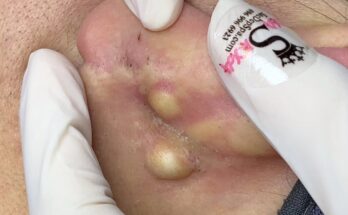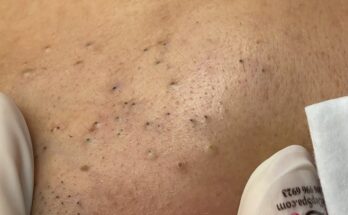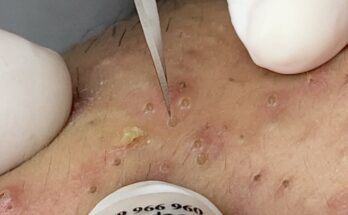
Retinoids are derivatives of vitamin A that have become a cornerstone of both anti-acne and anti-aging skincare routines. They work by influencing skin cell behavior at a deep, cellular level, leading to significant improvements in skin health and appearance.
How Retinoids Unclog Pores
Pores become clogged when dead skin cells, oil (sebum), and other debris get trapped inside. This leads to the formation of blackheads and whiteheads, which can then progress to inflammatory acne. Retinoids work to prevent and clear this congestion in a few key ways:
- Accelerating Cell Turnover: Retinoids promote faster skin cell turnover. This means that old, dead skin cells are shed more efficiently, preventing them from accumulating and clogging pores in the first place.
- Regulating Oil Production: While some believe retinoids are only for dry skin, they can also help regulate sebum production. By reducing excess oil, they minimize a key component of pore blockages.
- Comedolytic Action: The term “comedolytic” means that a substance helps prevent the formation of comedones (blackheads and whiteheads). Retinoids are highly effective at this, as they help to clear out existing blockages and prevent new ones from forming.
Benefits for Acne Scars and Fine Lines
Beyond their pore-clearing abilities, retinoids are celebrated for their remarkable effects on skin texture, including:
- Fading Acne Scars: Retinoids stimulate collagen production, which is a crucial protein for skin’s elasticity and structure. This increased collagen helps to plump and firm the skin, which can significantly reduce the appearance of atrophic (indented) acne scars. By promoting faster cell turnover, they also help to fade post-inflammatory hyperpigmentation (dark spots) left behind by acne.
- Reducing Fine Lines and Wrinkles: The same collagen-boosting mechanism that helps with acne scars also makes retinoids a gold-standard ingredient for anti-aging. By increasing collagen and elastin, they help to smooth out fine lines and wrinkles, giving the skin a more youthful and plump appearance.
- Improving Overall Skin Texture: Regular use of retinoids leads to a smoother, more refined skin texture. They help to soften rough patches and give the complexion a more radiant and even tone.
Tips for Beginners
Incorporating retinoids into your skincare routine requires patience and a gentle approach to minimize potential side effects like dryness, redness, and peeling. Here are some essential tips for beginners:
- Start Slow: Begin by using a low-concentration retinoid product just once or twice a week. This allows your skin to acclimate to the ingredient and build tolerance.
- Apply at Night: Retinoids can make your skin more sensitive to sunlight. For this reason, they are best applied as part of your evening skincare routine.
- Use a Pea-Sized Amount: A little goes a long way. Using more product than necessary will not speed up the results and will only increase the likelihood of irritation. A pea-sized amount is sufficient for your entire face.
- Moisturize: Retinoids can be drying. To combat this, apply a hydrating moisturizer after your retinoid. A popular method is the “sandwich method,” where you apply a layer of moisturizer, then your retinoid, and then another layer of moisturizer.
- Always Wear Sunscreen: This is non-negotiable. Because retinoids increase sun sensitivity, daily use of a broad-spectrum sunscreen with an SPF of 30 or higher is crucial to protect your skin from UV damage and prevent any potential side effects.
- Be Patient: It takes time to see results with retinoids. Consistent use over several weeks or even months is necessary to observe noticeable improvements in acne and skin texture.


